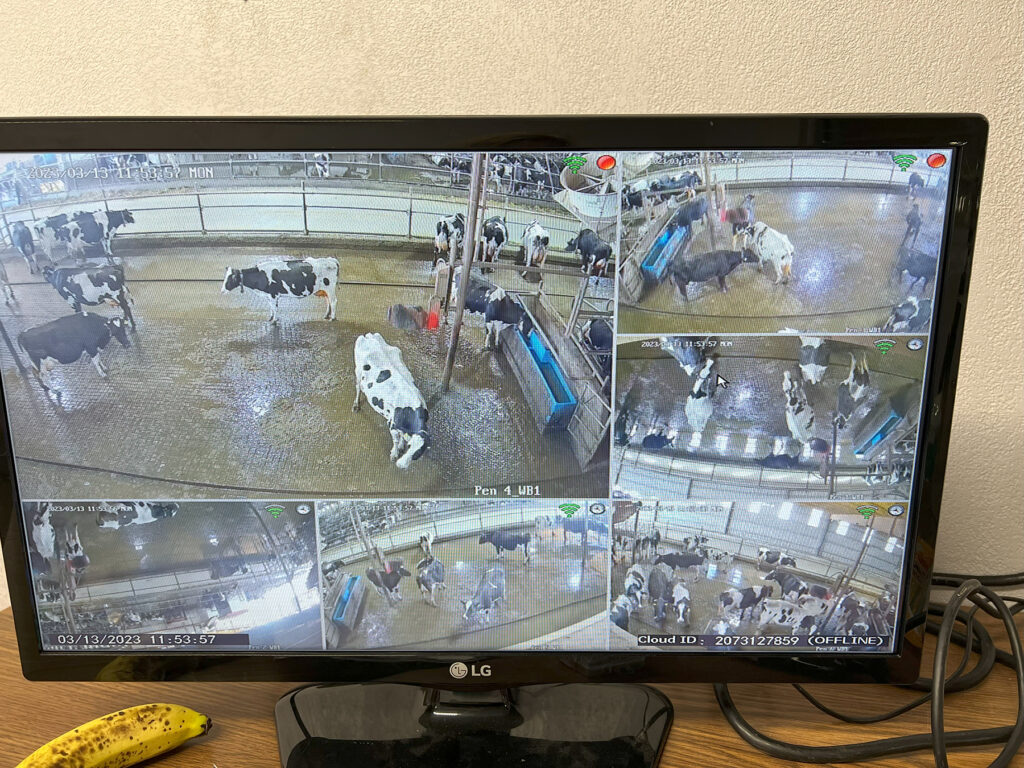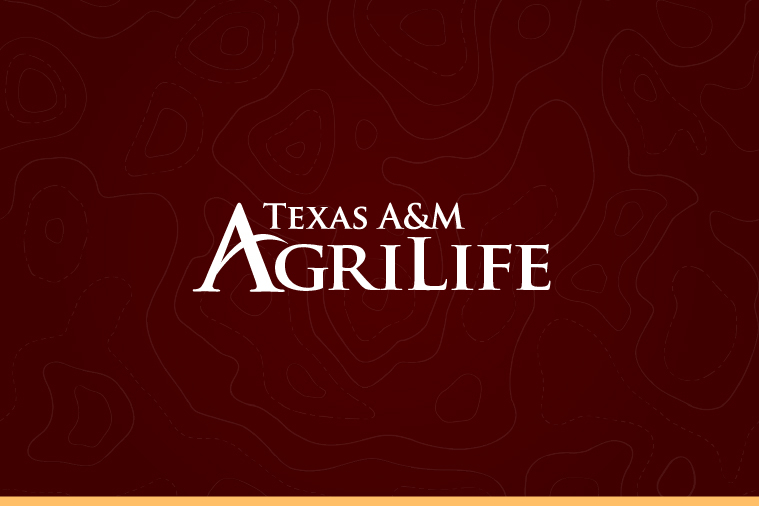The search for thermotolerant dairy cows
Daigle explores how heat stress impacts production and water consumption to identify cows that can beat the heat
Identifying efficient dairy cattle in a climate of higher temperatures is the goal of one scientist in the Texas A&M College of Agriculture and Life Sciences Department of Animal Science.

Courtney Daigle, Ph.D., associate professor and an animal welfare specialist, is determined to find out how heat affects dairy cow production and what traits allow certain cows to use less water and still have a higher heat tolerance.
“I’m looking for dairy cows that can take the heat without skipping a beat in an environment that is becoming increasingly less favorable,” Daigle said. “We want to use new knowledge and new technologies to create science-based solutions that help dairy producers achieve economic efficiency, resiliency and sustainability.”
Daigle is already facilitating the development of a database to help with genetic selection of cows that cope better with heat, a project funded through a U.S. Department of Agriculture National Institute of Food and Agriculture’s, USDA-NIFA, Agricultural Genome to Phenome Initiative grant.
That project includes merging over 1,000,000 lines of code from the National Dairy Herd Improvement Association with historical weather information to examine how variable weather affects productivity. From that analysis, questions can be asked about how that may differ by state or region, by weather events and by cow resiliency to better understand the intersection between weather and cow performance.
She is now working on a second grant, Optimizing Dairy Cattle Welfare and Productivity In a Thermally Challenging Climate, from the USDA-NIFA.
Her goal is to understand the variability of the heat stress response on production and to evaluate a suite of noninvasive metrics. She will use a combination of body-mounted, video analytic and productivity-tracking technologies to study individual cows and determine which ones remain consistently productive while experiencing heat stress.
“I want to answer two questions with this project,” Daigle said. “How do we select for a water-efficient cow, and what does the thermotolerant cow look like?”
Targeted research with high-tech tools
The new project is taking a targeted approach to the thermotolerance of dairy cattle. Daigle is working with a commercial collaborator, T&K Dairy at Snyder, which has two state-of-the-art robotic milking barns with 18 robots each.

“This will allow us to get some real targeted monitoring,” she said. “The cows have access to a free-flow system where she chooses when to be milked. These robot systems are great for cattle welfare and can provide detailed information on individual cows.”
Daigle has installed cameras throughout the milking barn to monitor the cows. She is concentrating on cows that are 45 to 90 days “in milk” and will watch each group for 45 days.
She said Brenda Murdoch, Ph.D., associate professor at the University of Idaho Department of Animal, Veterinary and Food Sciences, and Clare Gill, Ph.D., professor of animal genomics at the Texas A&M Department of Animal Science, will be in charge of sampling the cows for genotype. Additionally, the cows will be studied for behavioral phenotypes that are characteristic of resiliency to thermal challenges.
They will start with a cohort of 96 cows, swap them out and monitor another 96 for 45 days, and continue the process until they’ve monitored over 1,100 cows throughout two years.
“We want to see if we can find behavioral phenotypes that are characteristic of cows resilient to thermal challenges so that even when the weather changes, their change in productivity doesn’t deviate too drastically,” Daigle said. “The expectation right now is that when it gets hot, productivity will drop.”
However, she said, when you look at the cows as individuals, there’s a lot of variation – some drop a lot in production and some not as much.
“We want to figure out what makes those two different. I don’t know if it’s differences in their autonomic nervous system, which is the part of the body responsible for thermal regulation, temperament and milk let-down reflexes,” Daigle said. “I also don’t know what role their behavioral choices regarding drinking behavior and where and how they choose to spend their time plays into how they cope with environmental change.”
Monitoring water use for potential variability
The dairy industry has emphasized selecting animals for feed efficiency, but Daigle believes water efficiency might be just as key because of contemporary challenges involving an increasingly scarce water supply.
The expectation is there will be individual cows that are more behaviorally flexible to thermal challenges and those that are inherently more physiologically flexible. Daigle hopes to capture those by evaluating their drinking behavior and brush use.
Ahmed Abdelmoamen Ahmed, Ph.D., an associate professor at Prairie View A&M University, will help to develop machine-learning strategies to decode the video, particularly regarding drinking behavior across 24 waterers around the barn.
“I don’t really know what a water-efficient animal looks like yet, but that’s what we are hoping to find out,” Daigle said. “Some animals like to use the automated sprinklers in the barn to cool off, and others don’t. There’s some that go to the water and play, and some don’t. Part of that is their personality, which impacts how they interact with the world.”
Monitoring water efficiency is important because intake influences milk production, but there is also the consideration from an environmental and sustainability perspective because water is a limited resource.
“This project is an intersection between animal welfare and environmental sustainability, because, at the end of the day, we are trying to help the animals have a good quality of life in an environment that is becoming increasingly less favorable due to the heat,” Daigle said. “If water is one of our more precious resources and we use water for cooling the cows, keeping them hydrated, and keeping them clean, then it’s important to identify animals that use water judiciously.”
“We are looking for water-efficient animals and animals that can tolerate weather swings. Whether we have a winter storm or a heat wave, they’ve got to adjust – and making those changes can reduce productivity. That’s the thinking – identify the cows that can roll with the punches a little bit easier than others simply due to differences in their inherent biology and behavioral coping strategies.”
Building new selection tools for dairy producers
Why identify what a water-efficient and thermotolerant cow looks like? Daigle said she believes this information can be developed into an expected progeny difference, EPD, that can be used by dairy owners as they select replacement cows.
“When they’re selecting animals for either replacement heifers or ones to keep in their herd, that might be an additional consideration they can include in their decision-making process — is this animal likely to use more or less water than this other one?”





